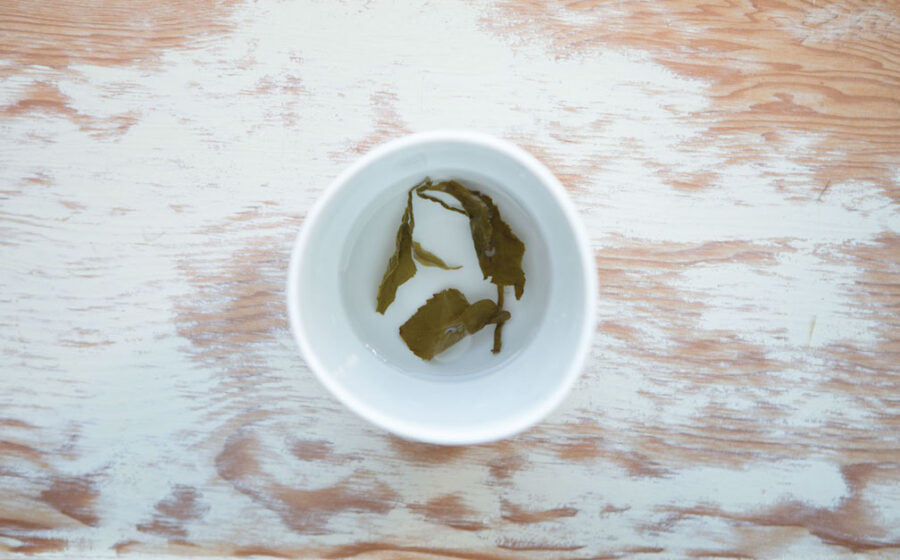[S]troll down the aisles of any Japanese convenience store and you’ll find a plethora of GABA-enriched products, including rice, cookies, chocolate and candy, sodas, soy milk, coffee, and tea. GABA, it’s advocates claim, can alleviate a range of maladies and even beef up bodybuilders. The benefits of GABA-fortified foods and beverages are so convincing in Japan that such items have become prevalent in the country’s diet and culture. Taiwan and Thailand are following suit.
GABA stands for gamma-aminobutyric acid, a compound our brains synthesize out of glutamate and one of the main neurotransmitters for the central nervous system. Often referred to as “nature’s Valium,” its function is to decrease neuron activity, which assists in preventing anxiety and stress related messages from reaching the motor centers of the brain, instilling the body with stability and calm.
The good news is that GABA occurs naturally in Camellia sinensis. And, thanks to discoveries by Japanese scientists, there’s a processing method to significantly increase GABA in teas. Credit is given to Dr. Tsushida Tojiro for discovering, in 1987, that when freshly picked tea leaves are exposed to anaerobic conditions (meaning without oxygen) the glutamic acid in the leaves is converted into GABA and processing the leaves in a nitrogen-rich atmosphere results in significantly higher concentrations of GABA. Further study revealed increased levels of glutamic acid in tea leaves that were shaded for ten to fifteen days before picking which, in turn, leads to even higher concentrations of GABA.
Today true GABA tea, available as green and oolong, is made in Japan and Taiwan. The freshly picked leaves are placed in stainless steel vacuum drums. Oxygen is removed and replaced with nitrogen. For the highest GABA concentration the leaves remain in the container for eight to ten hours, heated above 104 degrees Fahrenheit. The container is then shaken continuously for up to three hours under aerobic conditions (oxygen is introduced). These steps might be repeated several times prior to steaming or rolling which is followed by a final drying of the tea leaves. As with all tea production, other methods certainly do exist.
All tea sold in Japan as GABA must meet strict minimum standards. According to these standards set by the Japanese government, GABA tea must have at least 150 milligrams of GABA per 100 grams of tea. Surprisingly, although a Japanese discovery, most GABA tea available in the US is from Taiwan, where the process has been fervently embraced, along with the tea’s reputed positive effects. Taiwanese GABA tea is also sold in Japan so the manufacturing standards adhere to the strict law there.
So, in addition to all the healthy benefits of tea drinking, it’s believed that increased GABA in tea decreases stress and anxiety, helps to improve memory and alertness, aids in weight loss, and acts as a natural sleep aid. Tea, however, is not medicine and the potential positive effects of GABA certainly aren’t accomplished by simply sipping tea. It should be pointed out that many doctors doubt that GABA supplements help. Doctors at New York University’s Langone Medical Center are skeptical that ingesting GABA does anything for the brain, writing that “when GABA is taken orally, GABA levels in the brain do not increase, presumably because the substance itself cannot pass the blood-brain barrier and enter the central nervous system.”
And too much of a good thing could become a bad thing. If GABA levels are too high an individual may experience nausea, numbness, impaired memory, increased anxiety, shortness of breath, and tingling in the extremities. Certain research suggests that abnormal levels of GABA may even cause seizures. Such warnings are directed to individuals taking GABA supplements, particularly since the industry is not regulated. Resources for testing GABA levels are available online and should there be true concern consulting a physician is recommended.
All science aside, GABA tea does indeed have a distinctly different aroma and flavor profile. Common descriptors include woody aroma, pleasant fruity sour notes, silky smooth liquid, and some Taiwanese GABA oolongs have overtones of cinnamon that evolve in the cup and linger on the tongue.
The GABA-enhancing process raises the levels of catechins called gallate esters in the tea leaves. Esters, no doubt familiar to those who work with flavoring oils, are responsible for the aroma of many fruits, vegetables, herbs, and spices. These esters, not necessarily acting alone but leading the charge, contribute to the unique aromas and flavors of GABA tea.
Although not yet widely known in the west, GABA tea is slowly but steadily finding its way into more shops, websites, and home pantries. Initially purchased out of curiosity or for the touted benefits, once in the cup its deliciousness that seals the deal.
—Linda Villano is the co-founder of SerendipiTea.
















